Imagine a classroom where the clink of LEGO® pieces is the sound of young minds building their foundation in critical STEAM concepts. Today, this vision has become a reality!
From simple builds that reveal basic physics principles to intricate projects that inspire future engineers, LEGO offer a universe of educational possibilities.
Join us as we explore a variety of creative and fun LEGO activities that educators can easily integrate into their classrooms, making learning an adventure for students of all ages.
Benefits of LEGO in STEAM education

The integration of LEGO into classroom activities is not just about enhancing engagement, but also about tapping into a variety of educational benefits that extend from boosting cognitive abilities to fostering essential social skills. Let's explore the multifaceted benefits of using LEGO in STEAM education.
-
Spatial awareness: LEGO® bricks are powerful tools for developing spatial awareness. As students manipulate and fit these bricks together, they gain a deeper understanding of dimensions, shapes, and spatial relationships. This hands-on experience is crucial in nurturing the foundational skills required for geometry and design.
-
Engineering skills: The engineering aspect of LEGO is evident as students plan, build, and test their creations. Here they learn basic principles of engineering, such as balance, stability, and load distribution. Through trial and error, students discover how different designs affect the strength and functionality of their creations, which is a core aspect of engineering problem-solving.
-
Creativity: Students are not limited to following predefined instructions, instead, they have the freedom to imagine and create. This open-ended play allows them to bring their ideas to life, encouraging innovative thinking and creative problem-solving, which are vital skills in all areas of STEAM learning.
-
Teamwork: LEGO activities naturally promote teamwork in the classroom as students often work in groups on LEGO projects. This collaboration is an excellent opportunity for students to develop their communication skills. As they discuss their plans and work through challenges, they learn to express their thoughts clearly, listen to others, and provide constructive feedback.
- Adaptability: For younger students, basic LEGO bricks can be used to introduce fundamental concepts of mathematics and physics, such as counting, symmetry, and gravity. As students grow older, more complex kits, like those involving robotics and coding, can be introduced to challenge them with more advanced concepts in technology and engineering.
Innovative LEGO activities for the classroom
Integrating LEGO into classroom activities is an excellent way to enhance STEAM learning. The new LEGO® Education sets offer endless possibilities for creative and educational projects. Here are some innovative activities for each set.
LEGO® Education BricQ Motion Essential Set

Exploring forces and motion: This set is designed to help younger students (mainly in primary school) understand basic physical science concepts. Activities can include building simple machines that demonstrate force, motion, and energy. For instance, students can construct seesaws, ramps, or swinging pendulums to observe how different forces act and interact. See the lesson plan here.
Hands-on experiments: The set can be used to conduct experiments that demonstrate gravity, friction, and push-pull forces. Students can build a model, make predictions, test them, and record their observations, enhancing their scientific inquiry skills. Explore the lesson plan here.
Creative storytelling: Incorporating storytelling, students can use the set to create a narrative around their scientific experiments, like designing a sports event and explaining the physics behind each sport using their LEGO models. Check out the lesson plan here.
LEGO® Education BricQ Motion Prime Set
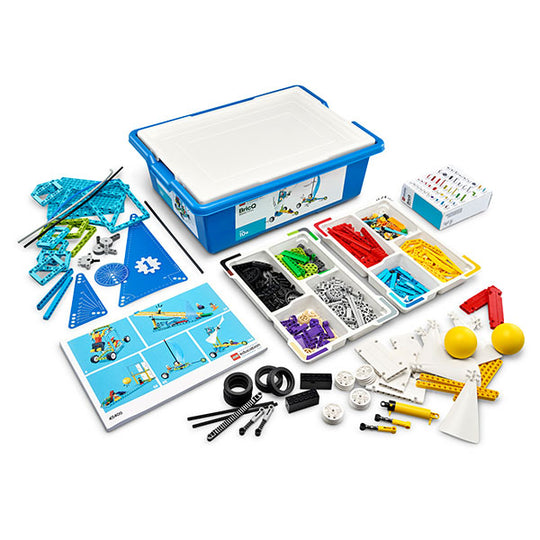
Advanced physics concepts: Suitable for middle school students, this set dives deeper into physics. Activities could include building models that explain Newton's Laws of Motion, exploring concepts of energy conservation, and understanding speed and acceleration. Explore the lesson plan here.
Engineering challenges: Students might engage in challenges to build efficient gear systems or create models that demonstrate the transfer of energy. These activities foster an understanding of mechanical engineering principles. See the lesson plan here.
Analytical thinking: This set encourages students to hypothesise, test, and refine their designs, developing critical thinking and problem-solving skills. For example, they can modify a model to see how changes affect its motion and stability. Check out the lesson plan here.
LEGO® Education SPIKE™ Essential Set
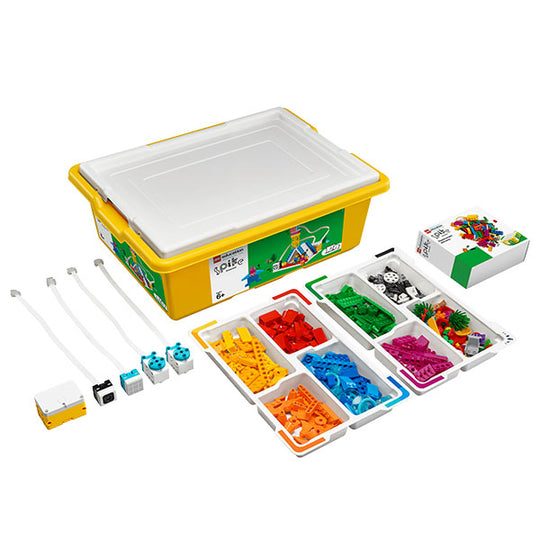
Introduction to robotics and coding: Aimed at primary school students, this set combines LEGO bricks with simple hardware and a coding environment. Students can build interactive models and program them to move, react, and make sounds. Find the lesson plan here.
Foundational STEAM concepts: Students can use the kit’s intelligent features to learn coding and data representation. For instance, creating a robotic animal and programming it to react to different stimuli. Explore the lesson plan here.
Collaborative projects: Working in teams, students can engage in projects that require them to design, build, and program a solution to a real-world problem, like creating a recycling sorting machine. Check out the lesson plan here.
LEGO® Education SPIKE™ Prime Set
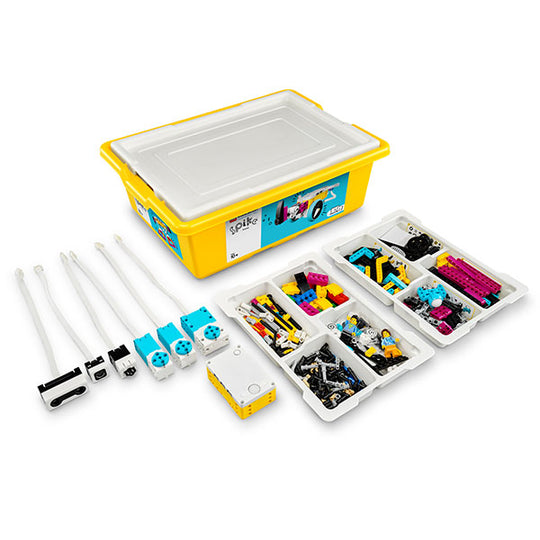
Complex robotics and advanced coding: This set, ideal for middle school students, allows for the construction of more sophisticated robots and the use of a more advanced coding language (based on Scratch). Students can engage in complex problem-solving tasks, building robots capable of performing intricate tasks. See the lesson plan here.
Interdisciplinary learning: Activities can include the integration of mathematics, science, and technology. For example, students can build a robot that navigates around obstacles using sensors, applying geometry for navigation and physics for motion. Explore the lesson plan here.
Real-world engineering projects: The set can be used for projects that mimic real engineering challenges, such as designing a robot to assist in disaster relief scenarios, encouraging students to think critically about design, functionality, and societal impact. Find the lesson plan here.
Discover the LEGO range at CD-Soft
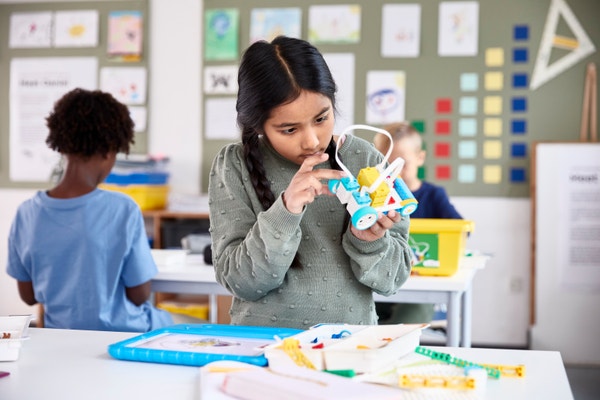
Explore the exciting realm of hands-on STEAM education with us at CD-Soft! We proudly offer the complete range of LEGO Education sets:
- BricQ Motion Essential Set (Grades 1 - 5)
- BricQ Motion Prime Set (Grades 5 - 8)
- SPIKE Essential Set (Grades 1 - 5)
- SPIKE Prime Set (Grades 5 - 8)
Each of these innovative kits is designed to ignite curiosity, foster creativity, and develop critical thinking skills in students of all ages.
Whether you're looking to introduce basic physics concepts or dive into the world of advanced robotics and coding, we have the right tools to enrich your educational environment.
Join us in shaping the minds of tomorrow with the LEGO Education sets. Visit our website or contact us directly to learn more and bring these dynamic learning tools into your classroom!

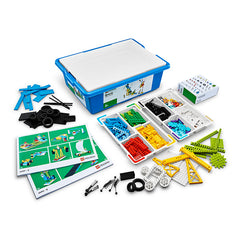 LEGO® Education BricQ Motion Essential Set - $247.50 inc GST
LEGO® Education BricQ Motion Essential Set - $247.50 inc GST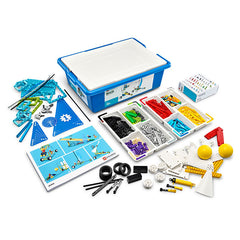 LEGO® Education BricQ Motion Prime Set - $247.50 inc GST
LEGO® Education BricQ Motion Prime Set - $247.50 inc GST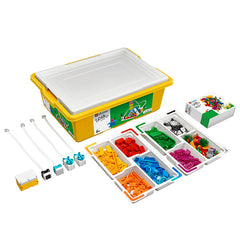 LEGO® Education SPIKE™ Essential Set - $515.90 inc GST
LEGO® Education SPIKE™ Essential Set - $515.90 inc GST LEGO® Education SPIKE™ Prime Set - $679.80 inc GST
LEGO® Education SPIKE™ Prime Set - $679.80 inc GST






